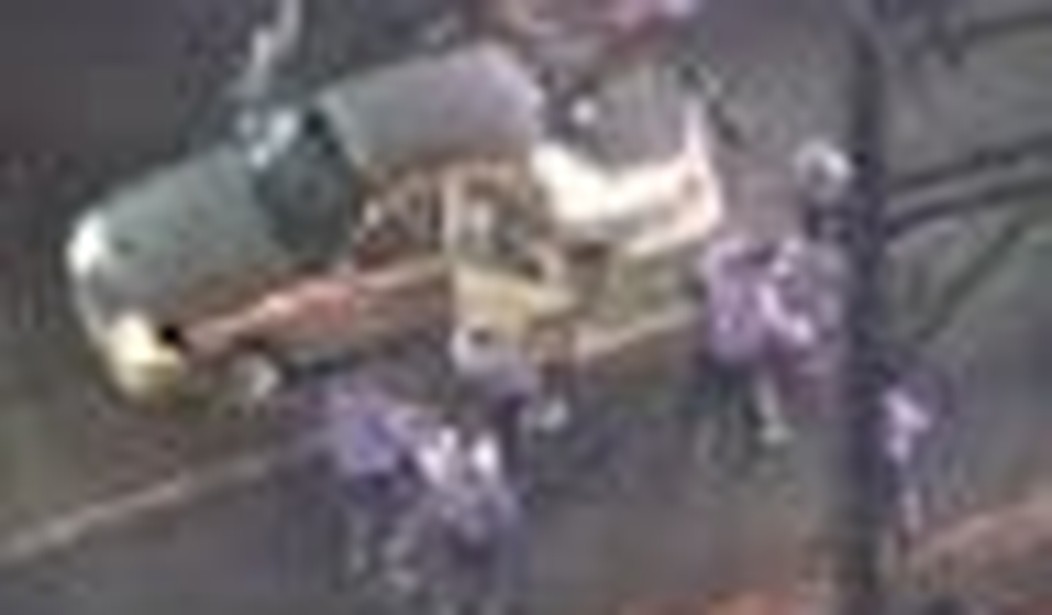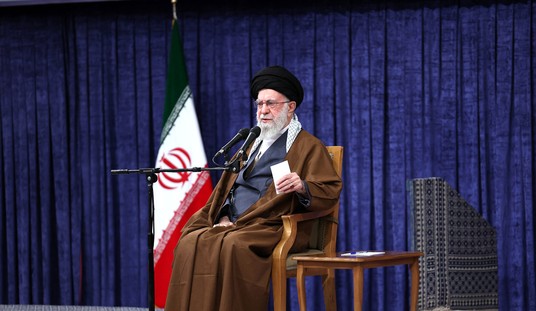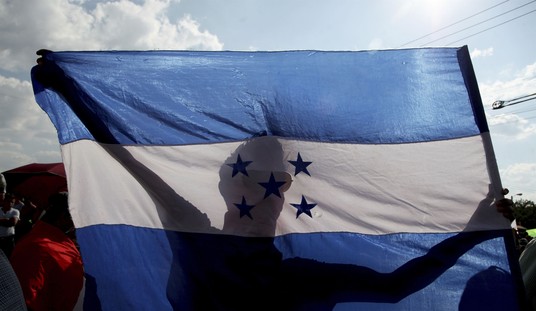To the great relief of many New Yorkers, most especially those who were delayed in crossing the Brooklyn and Triborough Bridges last Wednesday, Al Sharpton now turns his attention to the city of Philadelphia.
Sharpton and about 200 of his followers were arrested in New York on Wednesday during a well-orchestrated “day of civil disobedience” protesting the acquittal of three NYPD detectives in the November 2006 shooting death of Sean Bell. The reverend’s merry band took to the streets and blocked traffic on two major routes into and out of Manhattan, snarling traffic and raising tempers in equal measure.
Those arrested had been previously designated, with cops from the NYPD cooperating in the spectacle by using bullhorns to direct people into their respective cadres: “Those who want to be arrested, over here; those who don’t want to be arrested, over there.” Several protesters were miffed, apparently, that they had been denied the opportunity to tell their children and grandchildren about the day they were bundled off to the jug in the company of the esteemed Mr. Sharpton. Such an honor is diminished, after all, when just anyone is allowed to participate.
But there is hope for those of Sharpton’s flock who failed to make the starting lineup in the home game, for the traveling squad is surely being assembled even now for the upcoming road trip down the I-95 to Philadelphia. It is there that a controversy has erupted, one seemingly tailor-made for Mr. Sharpton’s unique talents. Last Monday, as you must surely have seen if you’ve watched television news lately, several Philadelphia police officers pursued and arrested three men allegedly involved in a shooting. The arrest was captured on videotape from a hovering news helicopter, and the tape, as they often say, isn’t pretty. Twelve police officers and a sergeant have been removed from street duty pending an investigation of the incident.
“[The video] absolutely shows inappropriate behavior,” Philadelphia Mayor Michael Nutter said Thursday on ABC’s Good Morning America. “There is a way to take people into custody … and there [are] not acceptable ways of taking people into custody.” Thus has the incident moved from the world of police work to that of politics, and it will be political considerations as much as legal and tactical ones that determine what happens to the officers shown on the tape.
As is so often the case, the racial calculus in the arrest was quickly determined and publicized so as to maximize the potential outfall. The circumstances favor weeks and months of news coverage and lots and lots of righteous posturing by Al Sharpton: the three arrested suspects are black while all of the involved officers are white.
I’m no expert on how Philadelphia cops are instructed to handle such incidents, but it seems safe to say this one did not go down in a manner consistent with what is taught in the police academy. What the public is never told, however, is that these things very rarely go down as they’re taught in the academy. And it’s important to remember that video shot from high above the action cannot give the viewer a complete picture of what happened after the suspects pulled over. The investigation may reveal justification for everything the officers did.
But I doubt it.
Prosecutors and Philadelphia P.D. brass must now determine which of the officers strayed from the law and department policy and by how much. The limits of space prevent me from listing everything shown on the video that appeared to be inappropriate, but if I were running things in Philadelphia I know which of those cops I’d be going after the hardest, for it was they who set the whole ugly chain of events in motion. I base my opinions on viewing the videotape on television and reading the various news reports. I have applied the training and experience I’ve received over a long career with the Los Angeles Police Department, which I acknowledge may differ greatly from the training and experience of the involved officers.
It appeared to me that things were headed for a bad turn even before the suspects’ car came to a stop. The tape shows the suspects’ car pulling to the right and stopping adjacent to the rear of a parked semi-trailer. Stopped next to the semi-trailer, facing the oncoming suspects and pursing officers, is a police car containing two officers. These officers might argue, perhaps correctly, that it was they who forced the suspects to pull over where they did, perhaps preventing a prolonged pursuit and whatever litany of misfortunes that might have attended it. Even so, those officers made a poor decision in stopping where they did, risking a collision with the suspects’ car or other police cars had the suspect driver not stopped. And then those same two officers made things worse — and precipitated everything that followed — when they rushed the suspects’ car.
The suspects, after all, were believed to have been involved in a shooting. The proper course of action would have been for the pursuing officers to bring their cars to a stop behind the suspects’ car in such a way that allowed the officers to stay behind the cover of their car doors while directing the suspects, one at a time, to exit their car and lie prone in the middle of the street. It appeared that the four cops in the first two pursuing cars were prepared to do just that until their boneheaded colleagues rushed in and made a hash of things.
After finding themselves downrange from their fellow officers, those two cops should have removed themselves from the line of fire, either by staying in the car and driving out of the way, or by taking cover somewhere outside what would have been, had there been a shooting, the path of police bullets. Instead they ran into a potential crossfire, rushing a car containing three suspects they believed were armed. Having exposed themselves to danger in this manner, these officers gave their colleagues little choice but to rush in and go hands-on with the suspects as well. And it was one of those first two officers who can be seen kicking the driver suspect several times while other officers appear to be using more appropriate force.
Other officers, perhaps five or six, will come out looking almost as bad; some even managed to give the business to more than one suspect. Yes, we are reminded that emotions were running high after the shooting death of Sgt. Stephen Liczbinski, who was gunned down by bank robbers on May 3, but it is precisely in such circumstances that police supervisors must emphasize the need for cool heads and see to it that their officers act appropriately.
Sadly, Sgt. Liczbinski’s murder has now been overshadowed by the arrest of three hoodlums, all of whom will end up as celebrities when Al Sharpton brings his ‘No Justice, No Peace Brigade’ down the road to Philly.
“Jack Dunphy” is the pseudonym of an officer with the Los Angeles Police Department. The opinions expressed are his own and almost certainly do not reflect those of the LAPD management.










Join the conversation as a VIP Member